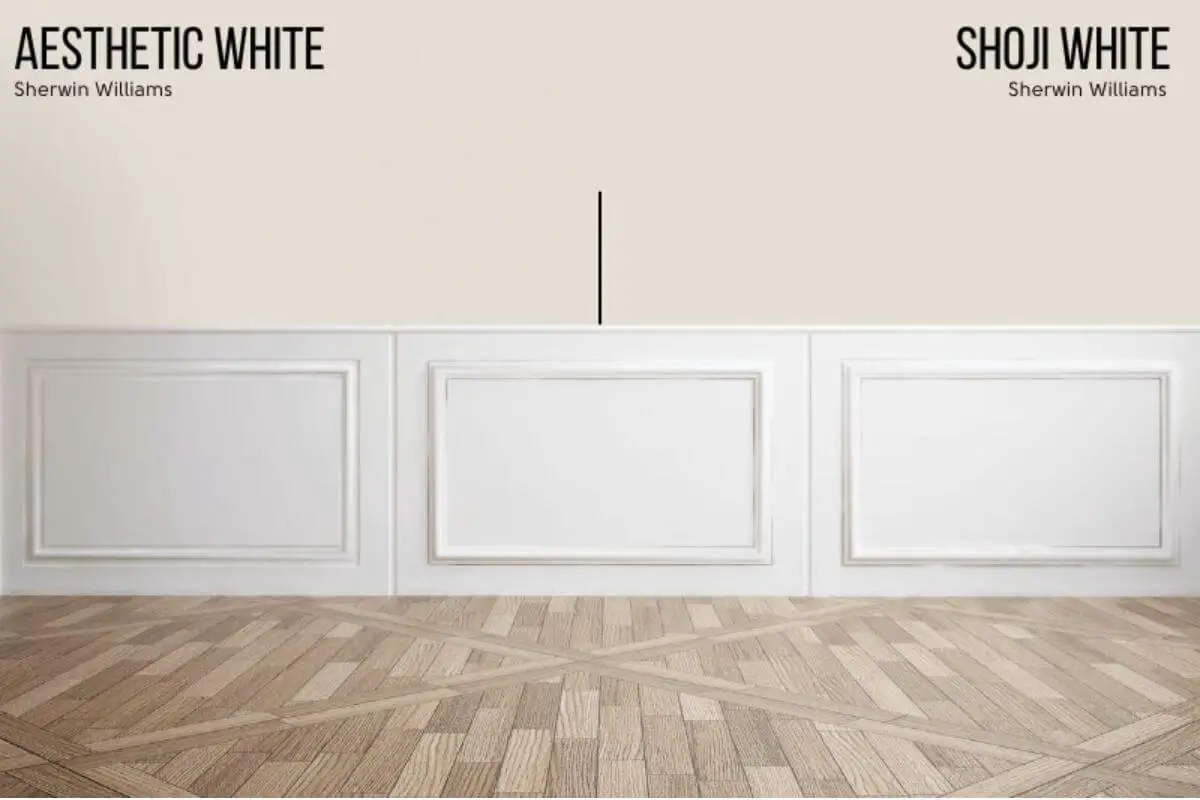When it comes to interior design and home decor, selecting the right paint color can significantly impact the overall look and feel of a room. White is a classic and versatile choice that can create a range of atmospheres, from crisp and clean to warm and inviting. Two popular white paint colors often considered for interior projects are Shoji White and Aesthetic White. In this article, we will compare these two shades to help you decide which one best suits your design preferences and home aesthetic.
Introduction
White paint may seem straightforward, but subtle variations in undertones and finishes can lead to significantly different results on your walls. Shoji White and Aesthetic White are both popular choices for those seeking a timeless white paint color.
Shoji White: A Closer Look
Color Characteristics
Shoji White is a soft, neutral white with warm undertones. It exudes a gentle and inviting ambiance that works well in various settings. This paint color is reminiscent of traditional Japanese shoji screens, which is where it gets its name.
Best Uses
Shoji White is an excellent choice for spaces where you want to create a cozy and welcoming atmosphere. It pairs beautifully with wood tones, making it a favorite for rustic and farmhouse-style interiors. It’s also versatile enough for use in bedrooms, living rooms, and kitchens.
Complementary Colors
Complementary colors to Shoji White include warm neutrals like beige, light gray, and soft taupe. Earthy tones and natural materials complement this white shade, creating a harmonious and balanced look.
Aesthetic White: A Closer Look
Color Characteristics
Aesthetic White is a cooler white with subtle gray undertones. It leans towards a more contemporary and modern aesthetic. This paint color can appear slightly different depending on lighting conditions, ranging from a crisp white to a soft grayish hue.
Best Uses
Aesthetic White is well-suited for contemporary and minimalist designs. It works wonderfully in spaces with abundant natural light, as it can maintain its bright and clean appearance. This shade is often chosen for modern kitchens, bathrooms, and open-concept living areas.
Complementary Colors
Aesthetic White pairs harmoniously with cool and neutral tones like charcoal gray, navy blue, and pale blue. It can create a sophisticated and serene backdrop for your interior decor.
Choosing Between Shoji White and Aesthetic White
The choice between Shoji White and Aesthetic White comes down to your design goals and the ambiance you want to create in your space. If you prefer a warm and inviting feel with natural materials, Shoji White is an excellent choice. On the other hand, if you lean towards a more modern and minimalistic look with cool undertones, Aesthetic White may be the better fit.
Application and Lighting
It’s crucial to consider the lighting in your space when choosing between these two paint colors. Natural light can affect how these whites appear on your walls, so it’s advisable to test paint samples in your home under different lighting conditions before making a final decision.

Conclusion
Both Shoji White and Aesthetic White are beautiful white paint options with distinct characteristics. Your choice should align with your interior design style and the ambiance you wish to create. Whether you opt for the warmth of Shoji White or the contemporary vibe of Aesthetic White, white paint can provide a timeless and elegant backdrop for your home decor.
FAQs
1. Can I use Shoji White or Aesthetic White for trim and moldings?
Yes, both paint colors work well for trim and moldings, creating a cohesive look when paired with the same shade on the walls.
2. Are these paints available in different finishes, such as matte, satin, or semi-gloss?
Yes, you can typically find Shoji White and Aesthetic White in various finishes to suit your preferences, from matte for a soft look to semi-gloss for added durability.
3. Do these paints require multiple coats for full coverage?
The number of coats needed depends on factors like the existing wall color and the paint quality. In some cases, you may need two coats for complete coverage.
4. Can I use Shoji White or Aesthetic White in small rooms to make them look bigger?
Yes, using white paint in small rooms can create a sense of spaciousness and light. However, consider lighting conditions to avoid a sterile feel.
5. Are there other whites to consider if neither Shoji White nor Aesthetic White suits my preferences?
Yes, there are countless white paint options available, each with unique undertones and characteristics. Consider consulting with a paint specialist or designer for more choices.



